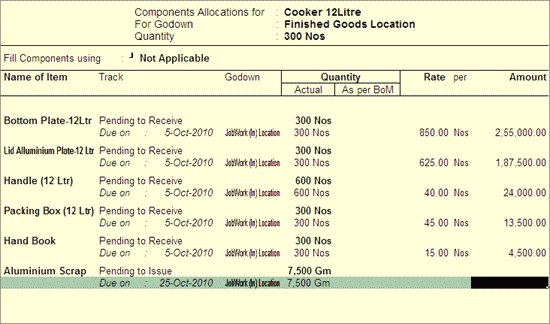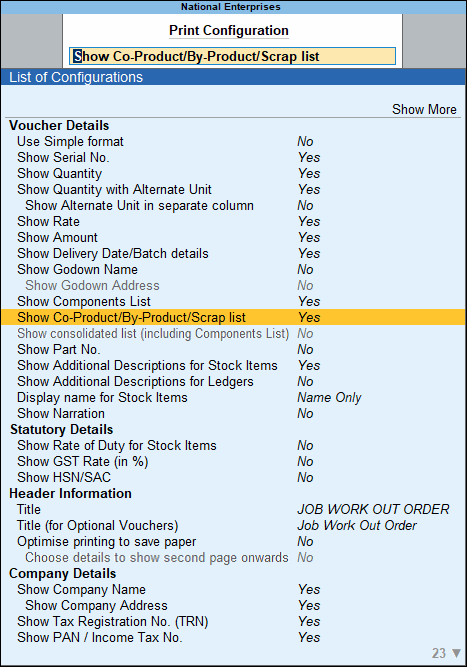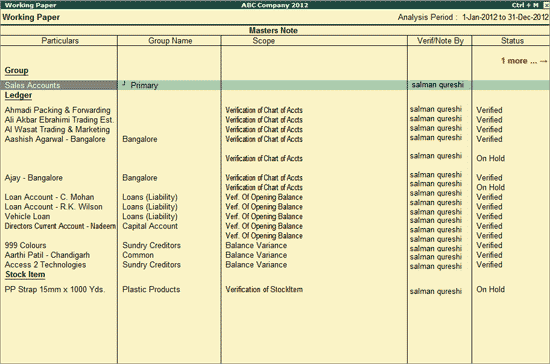
Tally Prime with GST
The Advanced Tally Prime Course covers the essentials of financial accounting, inventory management, payroll processing, and compliance with taxation laws like GST, TDS, and TCS.
Introduction
Through hands-on exercises and case studies, learners will gain practical experience in managing cost centers, banking utilities, data synchronization, and advanced inventory operations. This course also focuses on advanced features such as interest calculations, job costing, and scenario management, providing a complete toolkit for effective business management in today’s digital era. By the end of the course, learner will be proficient in using Tally Prime to streamline and optimize business processes.
Who Should Join
- Accounting and Finance Students: To gain practical skills in computerized accounting and GST compliance.
- Aspiring Accountants and Bookkeepers: To enhance proficiency in handling accounting tasks using Tally Prime.
- Small Business Owners and Entrepreneurs: To manage business finances, inventory, and GST compliance efficiently.
- Working Professionals in Finance Departments: To upgrade skills in financial reporting, taxation, and compliance.
- Individuals Preparing for Accounting Certifications: To acquire hands-on experience with industry-standard accounting software.
- Commerce Graduates: To improve employability by mastering advanced accounting software.
- Tax Consultants and Auditors: To streamline processes related to GST and other tax compliances.




What you’ll learn ?
- Gain expertise in financial accounting and transaction management using Tally Prime.
- Successfully implement cost centers, cost categories, and perform interest calculations in different business scenarios.
- Acquire proficiency in GST, TDS, and TCS compliance, ensuring accurate tax returns and reports.
- Demonstrate the ability to configure and execute data synchronization and manage job work orders effectively.
- Handle complex payroll management systems including statutory deductions like PF, ESI, NPS, and professional tax.
- Utilize advanced inventory control, including price levels, reorder levels, and stock management reports.
- Apply scenario management for budget forecasting and financial variance analysis.
- Tally Prime With GST
- Introduction to Accounting
- Introduction of Tally Prime
- Maintaining Data in Tally Prime
- Accounting Master Setup
- Inventory Master Setup
- Voucher Types & Chart of Accounts
- Multi Master & Preview of Financial
- Statements in Tally
- Accounting Voucher – Receipt & Payment
- Advance Accounting & Inventory Voucher
- Financial Statements
- Bill-wise Transactions
- Bill-wise Outstanding’s Reports
- Banking in Tally Prime
- Multi-Currency
- Purchase Order Process
- Advance Purchase Order
- Sales Order
- Advance Sales Order
- Advance Inventory
- Accounting & Inventory Case Study
- Manufacturing Process
- Case Study – Batchwise Manufacturing
- POS Voucher and Other Vouchers
- Group Company Creation
- Data Management
- Data Export Import
- Tally Remote Access
- Payroll Setup
- Payroll Transaction
- Payroll Reports
- GST Introduction
- GST Master Setup in Tally
- GST – Intrastate Supply
- GST – Interstate Supply
- GST Advance Transaction & Reports
- TDS Compliance
- Case Study – GST & TDS
- Year End Audit Transaction
- Tally Report – Accounting
- Tally Report – Inventory & Others
Certification
- K-LiC courses are recognised by Yashwantrao Chavan Maharashtra Open University (YCMOU).
- MKCL provides certificate to the K-LiC learner after his/her successful course completion.
- Yashwantrao Chavan Maharashtra Open University (YCMOU) provides mark sheet to successfully passed K-LiC learners (Jurisdiction: Maharashtra).
Academic Approach
The academic approach of the courses focuses on the “work-centric” education i.e. begin with work (and not from a book!), derive knowledge from work and apply that knowledge to make the work more wholesome, useful and delightful. The ultimate objective is to empower the Learner to engage in socially useful and productive work. It aims at leading the learner to his/her rewarding career as an employee or entrepreneur as well as development of the community to which s/he belongs. Learning methodology:
- Step -1: Learners are given an overview of the course and its connection to life and work.
- Step -2: Learners are exposed to the specific tool(s) used in the course through the various real-life applications of the tool(s).
- Step -3: Learners are acquainted with the careers and the hierarchy of roles they can perform at workplaces after attaining increasing levels of mastery over the tool(s).
- Step -4: Learners are acquainted with the architecture of the tool or tool map so as to appreciate various parts of the tool, their functions, utility and inter-relations.
- Step -5: Learners are exposed to simple application development methodology by using the tool at the beginner’s level.
- Step -6: Learners perform the differential skills related to the use of the tool to improve the given ready-made industry-standard outputs.
- Step -7: Learners are engaged in appreciation of real-life case studies developed by the experts.
- Step -8: Learners are encouraged to proceed from appreciation to imitation of the experts.
- Step -9: After the imitation experience, they are required to improve the expert’s outputs so that they proceed from mere imitation to emulation.
- Step-10: Emulation is taken a level further from working with differential skills towards the visualization and creation of a complete output according to the requirements provided. (Long Assignments)
- Step-11: Understanding the requirements, communicating one’s own thoughts and presenting are important skills required in facing an interview for securing a work order/job. For instilling these skills, learners are presented with various subject-specific technical as well as HR-oriented questions and encouraged to answer them.
- Step-12: Finally, they develop the integral skills involving optimal methods and best practices to produce useful outputs right from scratch, publish them in their ePortfolio and thereby proceed from emulation to self-expression, from self-expression to self-confidence and from self-confidence to self-reliance and self-esteem!
